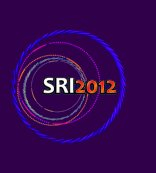Speaker
Dr
David Pennicard
(DESY)
Description
Single-photon-counting pixel detectors are the cutting-edge technology in a range of scattering and imaging experiments at synchrotrons. The Medipix3 readout chip has a number of novel features that are attractive for synchrotron experiments: a high frame rate with zero dead time, high spatial resolution, and a “charge summing” feature that can improve image quality.
Using this readout chip, DESY are developing a large-area Medipix3-based detector array (LAMBDA). A single LAMBDA module consists of 2 by 6 Medipix3 chips on a ceramic carrier board, bonded to either a single large silicon sensor or two smaller high-Z sensors. The readout electronics are placed behind the sensor, allowing tiling of multiple modules. The readout electronics consist of a signal distribution board, which provides services to the detector head such as powering, and a readout board, which uses an FPGA to control the detector head and communicate with a control PC. Currently, the first large silicon modules have been constructed and read out with a prototype readout board, and we are working on the hardware and firmware for a high-speed readout system based on 10-Gigabit Ethernet links.
One limitation of standard silicon hybrid pixel detectors is their poor quantum efficiency at higher photon energies. In collaboration with Canberra France Specialty Detectors, we are developing a germanium hybrid pixel detector for use on higher-energy beamlines. Although germanium needs to be cooled during operation, small-pixel photon counting detectors are much more tolerant of leakage current than large spectroscopic detectors, so cryogenic temperatures are not need. Canberra have produced a set of 256-by-256-pixel planar germanium sensors with 55µm pitch, and these have been bonded to Medipix3 readout chips by Fraunhofer IZM (Berlin). These first germanium hybrid pixel detectors are currently being tested.
Primary author
Dr
David Pennicard
(DESY)
Co-authors
Dr
Heinz Graafsma
(DESY)
Mr
Helmut Hirsemann
(DESY)
Dr
Marie-Odile Lampert
(Canberra France Specialty Detectors)
Mr
Mario Rothermund
(Fraunhofer IZM)
Mr
Michael Epple
(Technische Universität München)
Mr
Milan Zuvic
(Canberra France Specialty Detectors)
Mrs
Sabine Lange
(DESY)
Mr
Sergej Smoljanin
(DESY)
Mr
Thomas Fritzsch
(Fraunhofer IZM)
